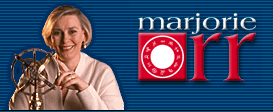


Gertrude Stein, the controversial American novelist and playwright, an eccentric and colorful figure in the post-World War I literary scene has had her life and talents spotlighted in a well-reviewed biography After Life. She was a character of “bewildering contradictions”. Depending on who you spoke to, she was either a genius or a charlatan.
She was born 3 February 1874 7.55am Allegheny, Pennsylvania, the youngest daughter of an upper-middle class Jewish family and became one of the first female students admitted to Harvard to study medicine and psychology under William James, but rapidly tired of the field. A successful older brother Michael gave her a generous stipend to live comfortably for the rest of her life. Along with her brother Leo she became a central figure of the Roaring ’20s in Paris, presiding over an artistic salon. Without their patronage, Matisse and Picasso might have floundered early in their careers. She was a mentor to Fitzgerald and Hemingway so was at the cutting edge of the aesthetic revolution.
She is described as ‘a genius, imprimatur and often quite difficult person.’
Four years after she moved to Paris in her late twenties she met Alice B. Toklas, part of the Paris avant-garde and it was love at first sight for both. They ended up devoted life partners, with Toklas missing Stein for 21 years after her death.
Stein’s reputation was damaged in World War 11 by her admiration for Petain, head of the collaborationist Vichy government, responsible for the deportation of over 75,000 Jews to Nazi Germany. Both Stein and Toklas of Jewish heritage, survived in large part thanks to the refusal of their neighbours in Bilignin to shop them to the Nazis.
Gertrude Stein had a stellium in Aquarius of Saturn, Venus, Mercury, Sun opposition Uranus square North Node in Taurus; with her Sun Mercury square Pluto in Taurus. Fixed, enduring, stubborn, quite autocratic, unconventional, defiant. An emphasized North Node would draw her to the zeitgeist, the spirit of the time in the social order. Her Mars in creative Pisces was opposition Jupiter for high enthusiasm though lacking in common sense. An unaspected Virgo Moon in her 7th would give her vulnerability and sense of emotional disconnection although she desperately needed a partner being in the 7th.
Her writing style often met with derision but her biographer argues for an understanding of what she was trying to do. ‘You may feel baffled by the repetitions, the anchorless strangeness: but what helps the wary reader is that Stein wanted to do to language what Picasso, who owed her so much, was doing to visual representation in Cubism.’
Alice B. Toklas, 30 April 1877, San Francisco was not an intuitively good mix with her. She had a Taurus Sun, Venus and Neptune square Mars in Aquarius which tangled fairly noisily with Stein’s Aquarius planets and her Uranus. Although Toklas’ Sun was exactly conjunct Stein’s North Node drawing them into the centre of the social action of the day. And Toklas’s Taurus Sun, Venus, Neptune trine Stein’s Moon would help with her South Node conjunct Stein’s Moon as well. Toklas’s eternally optimistic Sagittarius Moon falling in Stein’s 10th would be helpful on the career front.
Their relationship chart has an affectionate composite Sun Venus conjunction; with a power-couple Pluto opposition Jupiter square a dutiful Saturn – with Jupiter Pluto square an unconventional Uranus. Saturn Pluto would chain them together. Saturn conjunct Mars suggests one partner would have to constantly bite their tongue to fit in which presumably would be Toklas.
Not an easy bond but it clearly worked well enough to hold them together for decades.

Fascinating! Thank you for this.
Thanks for this, Marjorie! Wonderful to see Gertrude and Alice profiled. They were quite the avant garde couple in their day and their influence is still greatly felt. I happen to be reading a couple of older biographies about them and your post fits right into my pursuit to understand their lives. Gertrude had a famous falling out with Hemingway, who as I recall, credited her with a tip to view the paintings of Cezanne. The paintings were evidently a revelation to Hem, who took Gertrude’s advice to study them and see that a juxtaposition of shapes, colours and ideas make the painting (or story) rather than simply true-to-life realism (which is hard enough for a non-artist). Like Gertrude, Hem then created his early novels so the reader puts the pieces together in his/her mind without everything being explained (his “iceberg” theory). Gertrude used repetition and sound patterns to communicate sensations and images. The reader responds on a semi-subconscious as well as literal level. Apart from her so-called bio of Alice, The Autobiography of Alice B. Toklas (which isn’t about Alice), Gertrude’s early works are quite accessible. Her experimental works (like Tender Buttons) are full of innuendo and associations and take quite a bit of effort to read. She was a rather radical artist but Alice ran her life. They were one of the first well-known gay couples, which is probably why they lived permanently in France, where society was more accepting.